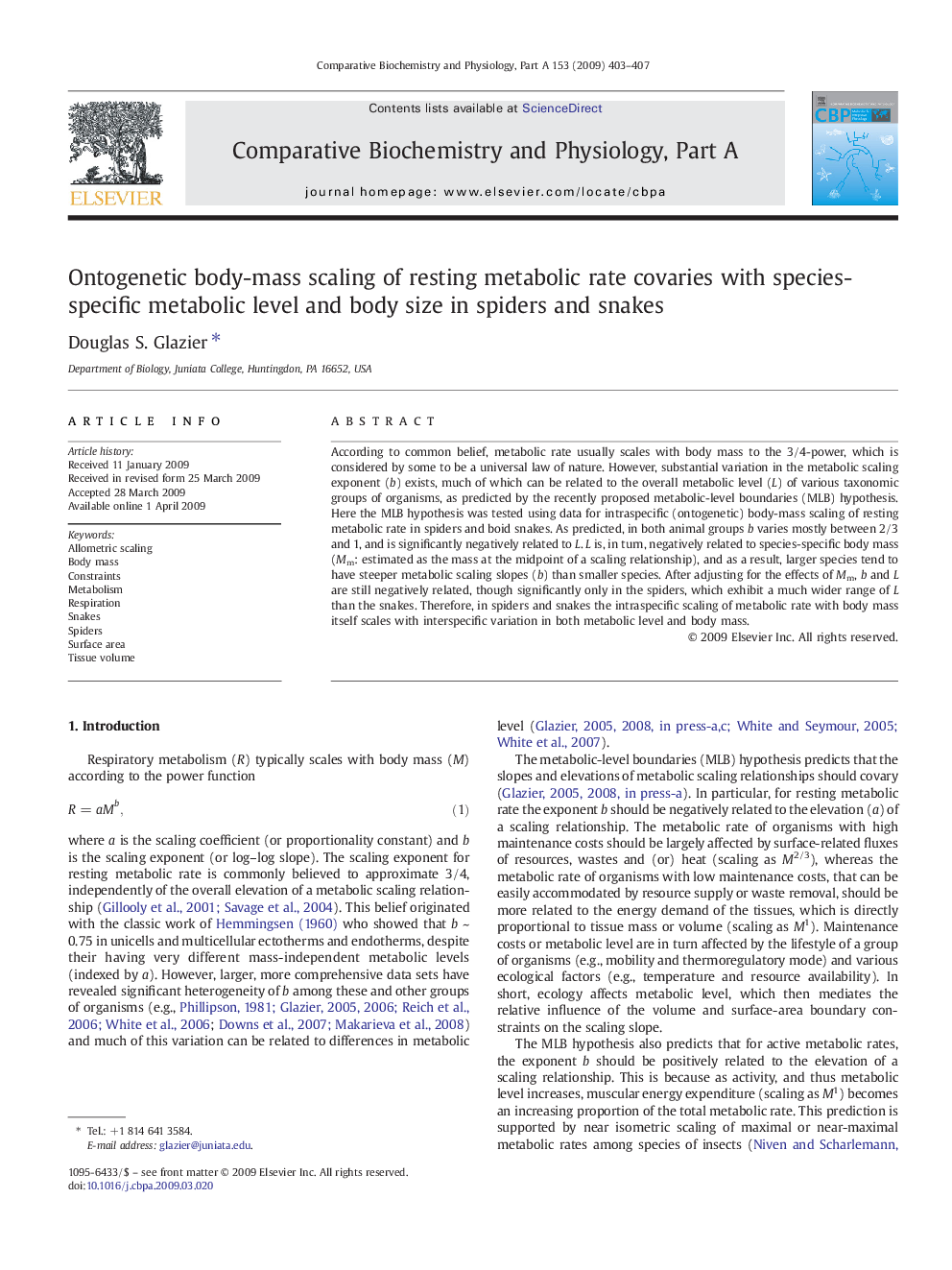| Article ID | Journal | Published Year | Pages | File Type |
|---|---|---|---|---|
| 1972786 | Comparative Biochemistry and Physiology Part A: Molecular & Integrative Physiology | 2009 | 5 Pages |
According to common belief, metabolic rate usually scales with body mass to the 3/4-power, which is considered by some to be a universal law of nature. However, substantial variation in the metabolic scaling exponent (b) exists, much of which can be related to the overall metabolic level (L) of various taxonomic groups of organisms, as predicted by the recently proposed metabolic-level boundaries (MLB) hypothesis. Here the MLB hypothesis was tested using data for intraspecific (ontogenetic) body-mass scaling of resting metabolic rate in spiders and boid snakes. As predicted, in both animal groups b varies mostly between 2/3 and 1, and is significantly negatively related to L. L is, in turn, negatively related to species-specific body mass (Mm: estimated as the mass at the midpoint of a scaling relationship), and as a result, larger species tend to have steeper metabolic scaling slopes (b) than smaller species. After adjusting for the effects of Mm, b and L are still negatively related, though significantly only in the spiders, which exhibit a much wider range of L than the snakes. Therefore, in spiders and snakes the intraspecific scaling of metabolic rate with body mass itself scales with interspecific variation in both metabolic level and body mass.
